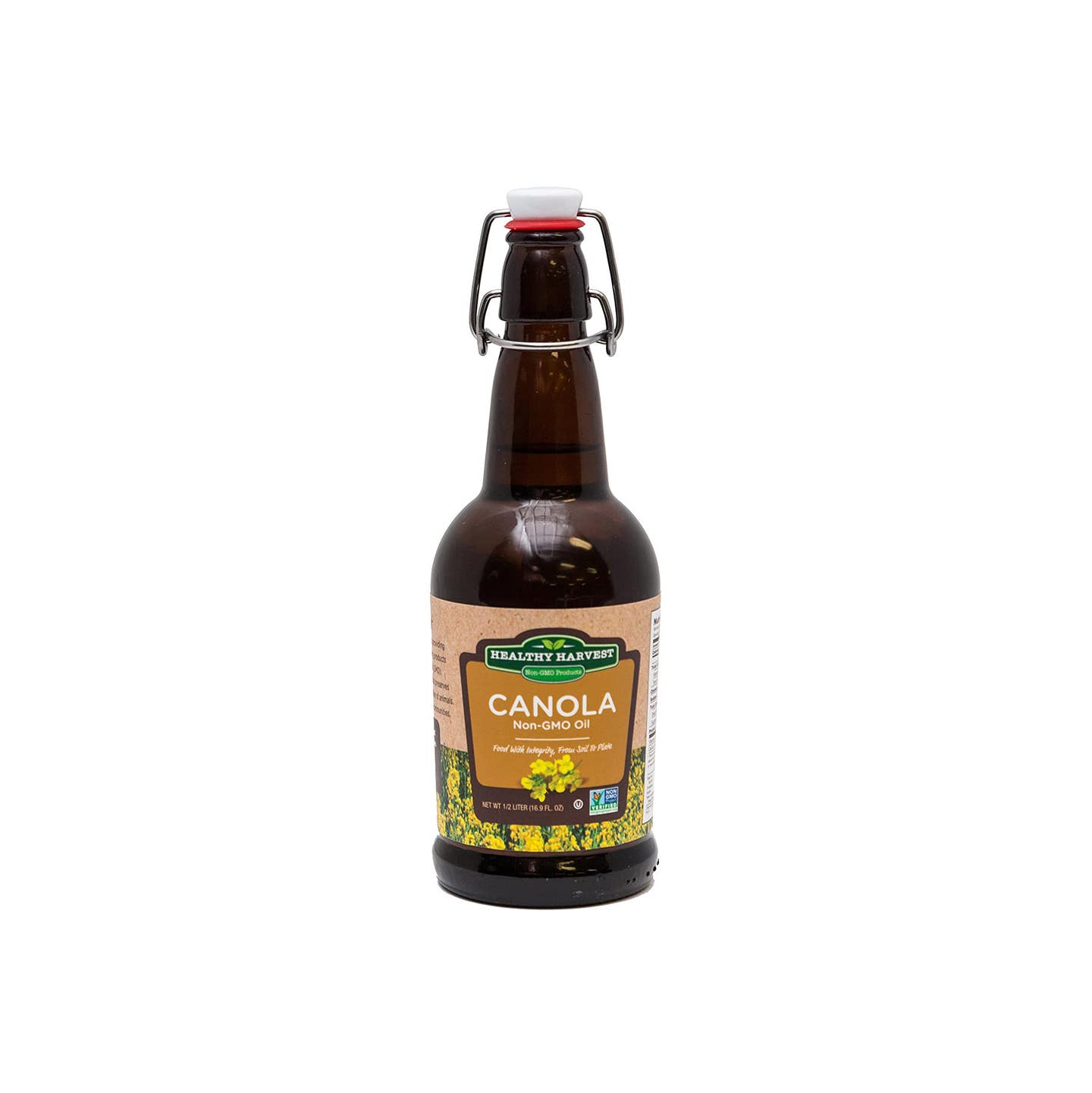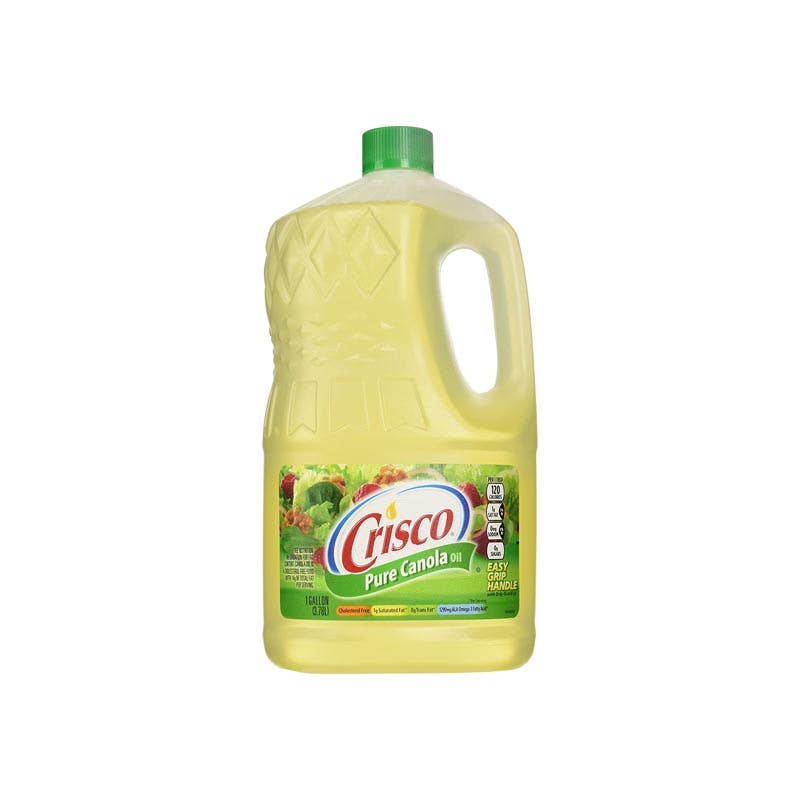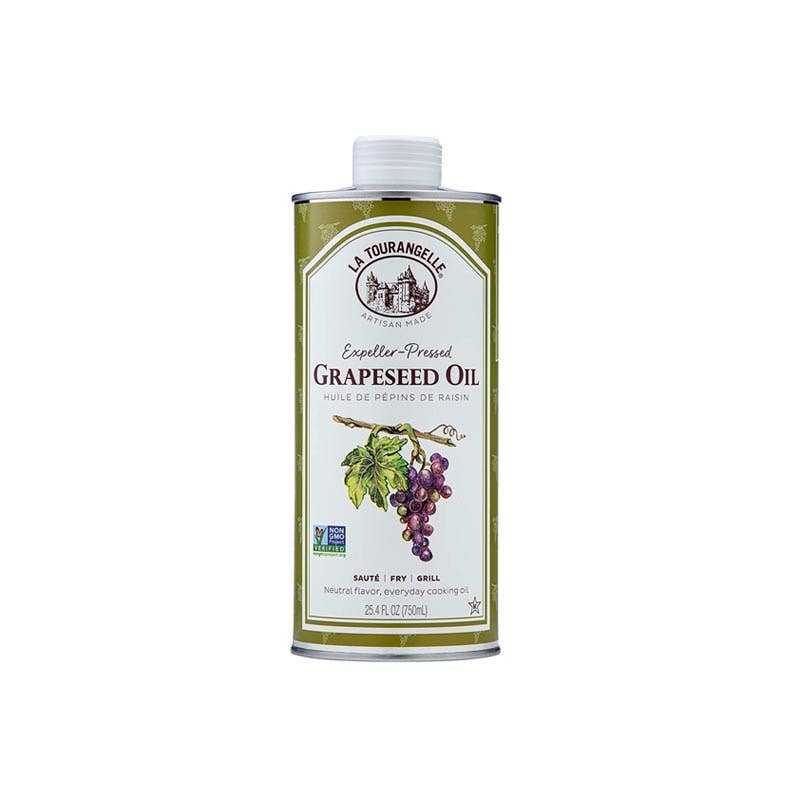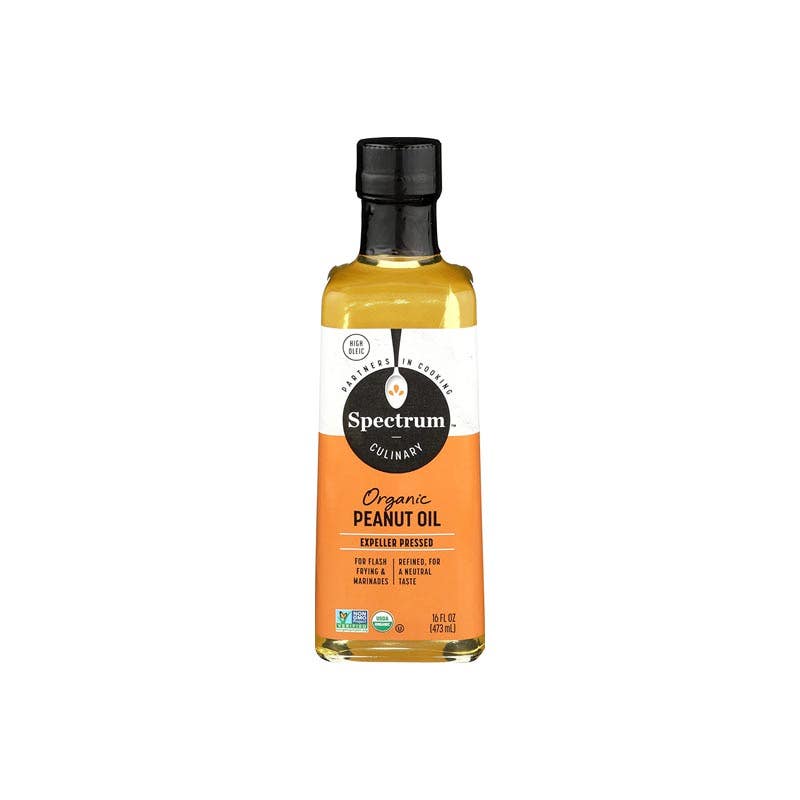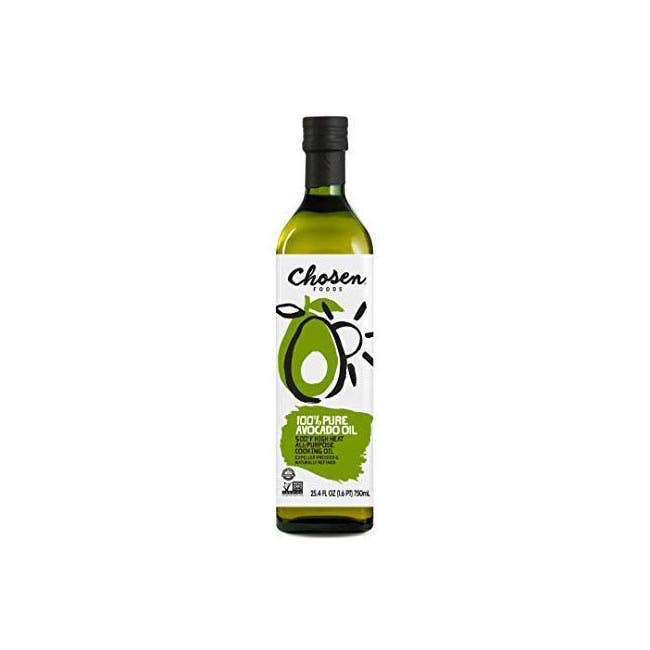The Best Oils For Frying Don’t Create a Smoke Show
A food scientist and a fry master share their picks.
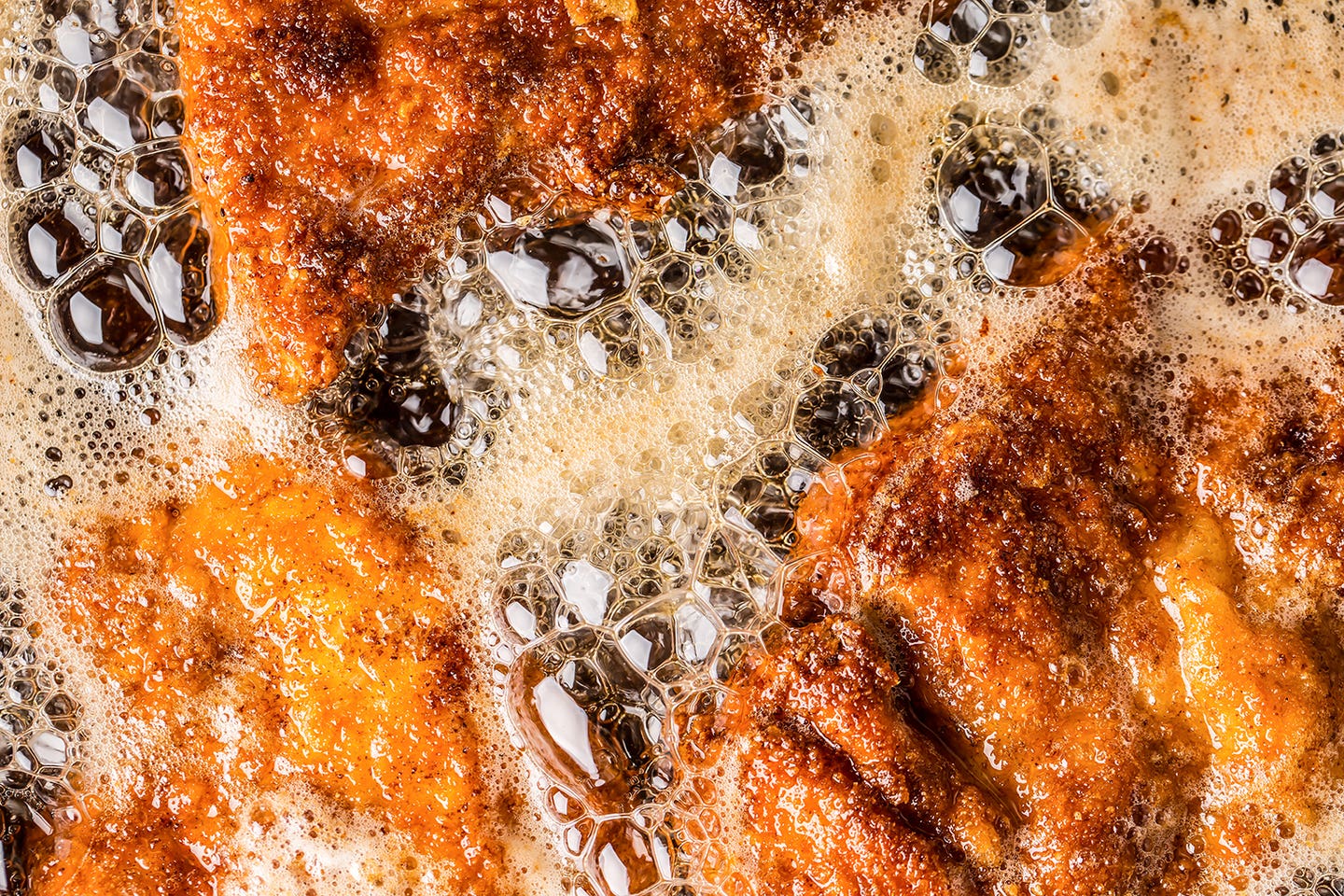
Jay Wolfe uses 35 pounds of oil each month to power the three or four times their pop-up, THICC Burger, opens in cities around the country. By now, they know exactly how to pick an oil to create perfectly crispy buttermilk fried chicken that’s cooked all the way through. For Wolfe, picking the best oils for frying means finding one with the right taste, the right price, and the ability to go “above 400 degrees Fahrenheit, preferably, so I don’t burn anything down—like my house."
They're referring to the smoke point of the oil, which culinary scientist and author Jessica Gavin explains is the temperature at which "the lipids breakdown and begin smoking, transferring that [off] taste to the food, or burning delicate ingredients like garlic." Beyond the appropriate smoke point, the best frying oils either have a neutral flavor (like canola) or add a complementary flavor (like peanut, which Gavin describes as having a "pleasant, slightly nutty taste").
Guided by these two experts, we picked a few of the best oils out there for you to use when frying. Once your pantry is well-stocked, check out this guide for all the other tips and tools you need to fry.
- Best Overall: Healthy Harvest Canola Oil
- Best Value: Crisco Pure Canola Oil
- Best Splurge: La Tourangelle Grapeseed Oil
- Best Flavor: Spectrum Organic Peanut Oil
- Best Versatility: Chosen Foods 100% Pure Avocado Oil
Features to Keep in Mind
Types of Frying Oils
Canola, grapeseed, peanut, and avocado oils all tend to work well. Each type of oil will have a different flavor (or lack thereof) and smoke point. To the right fit for your frying tasks, weigh those attributes with your price range. In general, experts advise not to spend too much for frying oil—paying more for an oil won't buy you too much extra in the results (you don't need to worry about virgin or extra virgin, as in olive oil). But, Gavin advises, "Check the ingredient statement to make sure that you are buying what you are expecting."
Smoke Point
"For deep frying, the oil typically reaches between 325 to 375°F (163 to 191°C) to cook the interior and get a golden-brown crust," says Gavin, so she recommends an oil that has a smoke point around 400 or more degrees. Some will have this listed on the packaging, while others you'll need to estimate based on the type of oil. Gavin has a full list of smoke points on her website for reference.
Flavor
"Consider cuisine first," advises Gavin. Some oils are neutral, meaning they will not add much or any flavor to your food, while others impart subtle flavors. Canola tends to be a standard deep-frying oil because it is very neutral, and Gavin likes avocado oil for the same reason. Peanut oil offers a little nutty flavor, but which tends to work well with deep-fried foods like french fries, while olive oil’s fruitiness (and low smoke point) tends to be better for sautéing or pan-frying.
Price
"All deep frying oils are refined to remove impurities to optimize smoke points and prolong frying time, so I wouldn’t spend too much on it" explains Gavin. The refining process makes most oils more similar than they are different. For Wolfe, it's about balancing priorities. "Canola is usually mid-price level," they say, so they often mix it with pricier grapeseed oil to stretch it out without breaking the bank.
Packaging
When buying oil, Gavin recommends looking for dark or stainless steel bottles. "Clear bottles allow for light exposure, which can degrade the oil faster," she explains. "The color helps to filter out the ultraviolet rays that damage the lipids and causes an off-taste, rancidity, and darkening in color." She also recommends buying in small quantities and only when you need it, so that you can keep it as fresh as possible. "Check the expiry date before purchasing," she advises, then keep it in a dark, cool place and try to use it within a month or two.
Our Top Picks
Best Overall: Healthy Harvest Canola Oil
Best Overall
Canola oil’s neutral flavor makes it an easy go-to option for almost any kind of frying. This non-GMO brand clearly states its single ingredient, as Gavin suggests looking for, is pressed, rather than extracted with solvents, and packaged in a BPA-free jug. The gallon size of this canola oil makes it a good large-format option for reliable oil, and for sporadic fryers, there’s a smaller size available too.
Best Value: Crisco Pure Canola Oil
Best Value
The best way to get a good value? Buying the cheapest pure canola oil you can find. Wolfe says they often purchase the Restaurant Depot store-brand, and this version from Crisco fits that description too. For everyday frying when affordability matters most, this gets the job done.
Best Splurge: La Tourangelle Grapeseed Oil
Best Splurge
Grapeseed oil offers light, neutral flavor with a higher smoking point than canola oil—this one goes up to 450 degrees Fahrenheit—making it a good higher-end option that’s a bit more of a splurge. It also avoids peanut oil’s allergen issue while providing a somewhat more neutral flavor than avocado oil. La Tourangelle has long produced some of the best high-quality oils for cooking, and the commitment to quality shows in the metal packaging, which prevents oil degradation. To keep costs reasonable, Gavin saves grapeseed oil for lighter uses like stir-frying and pan-frying, while Wolfe sometimes mixes it with canola oil to stretch it.
Best Flavor: Spectrum Organic Peanut Oil
Best Flavor
Peanut oil’s light nuttiness can complement fried tofu or give French fries a little extra oomph. It also has a high smoke point that is ideal for prolonged deep frying— this one goes to 460 degrees Fahrenheit. While refined peanut oils like this one shouldn't cause trouble for most people allergic to peanuts, those with allergies should be careful and especially avoid any unrefined peanut oils.
Best Versatility: Chosen Foods 100% Pure Avocado Oil
Best Versatility
Avocado oil is highly versatile, with a neutral flavor and high smoke point. It also has heart health benefits similar to that of extra-virgin olive oil, too. "It's pricier because it’s made in smaller batches," Gavin says, “but a good-tasting oil with nutritional benefits is worthwhile to pay a little extra to add to your pantry. This particular brand comes in the ideal green bottle to prevent light exposure, and a study published by the journal Food Control in October 2020 showed it to be one of the few brands on the market to actually be pure and still fresh by the expiration date.
Ask the Experts
What’s the best technique for bringing oil up to temperature?
Lower and slower is key. Wolfe keeps the heat around medium to bring the oil gradually up to 350 degrees Fahrenheit (a common temperature for frying chicken or fries). Gavin agrees, recommending occasional checks with a high heat thermometer, especially when sautéing or pan-frying, as the smaller, shallower amounts can accidentally hit the smoke point (burn) more quickly, since less oil heats up faster. If the oil gets too hot, explains Wolfe, that is when the outside of a food will cook or burn too quickly, leaving a raw interior.
What’s an easy way to know when oil is ready for frying?
"I like to stick the end of a wooden spoon in to check the readiness of my oil," says Wolfe. "If you see tiny bubbles, it’s ready!" Gavin suggests testing the oil by tossing in a dried breadcrumb, then watching to see if it darkens too quickly. “If it releases bubbles that float to the surface with gradual color change, it's ready for frying," she says. A thermometer always works well too.
How many times can I use the same oil for deep frying?
"In the Southern/Black tradition, we keep oil for a LONG time," says Wolfe, estimating that often means a month or two, if you clean and strain it properly. "That’s where all of the flavor is stored." But they also note that if your oil has any dark bits, you need to toss it, "or the flavors will get into anything you cook in it." Just like with the original bottle, strained oil should be stored in a cool dark pantry.
Gavin notes that heating the oil causes degradation of the lipids over time, but the number of times it can be used depends mainly on the food that was fried in it. "Anything breaded that could release particulates into the oil can be reused about three to four times. Simple ingredients, like chips or wonton wrappers, can be used about eight times," she estimates. "Once the oil starts to look cloudy and has a strong “off” aroma, use fresh." But if you want to extend the life, she has a quick tip: "You can also add new oil to cool used oil to dilute the amount of degradation."
Keep Reading
Continue to Next Story
